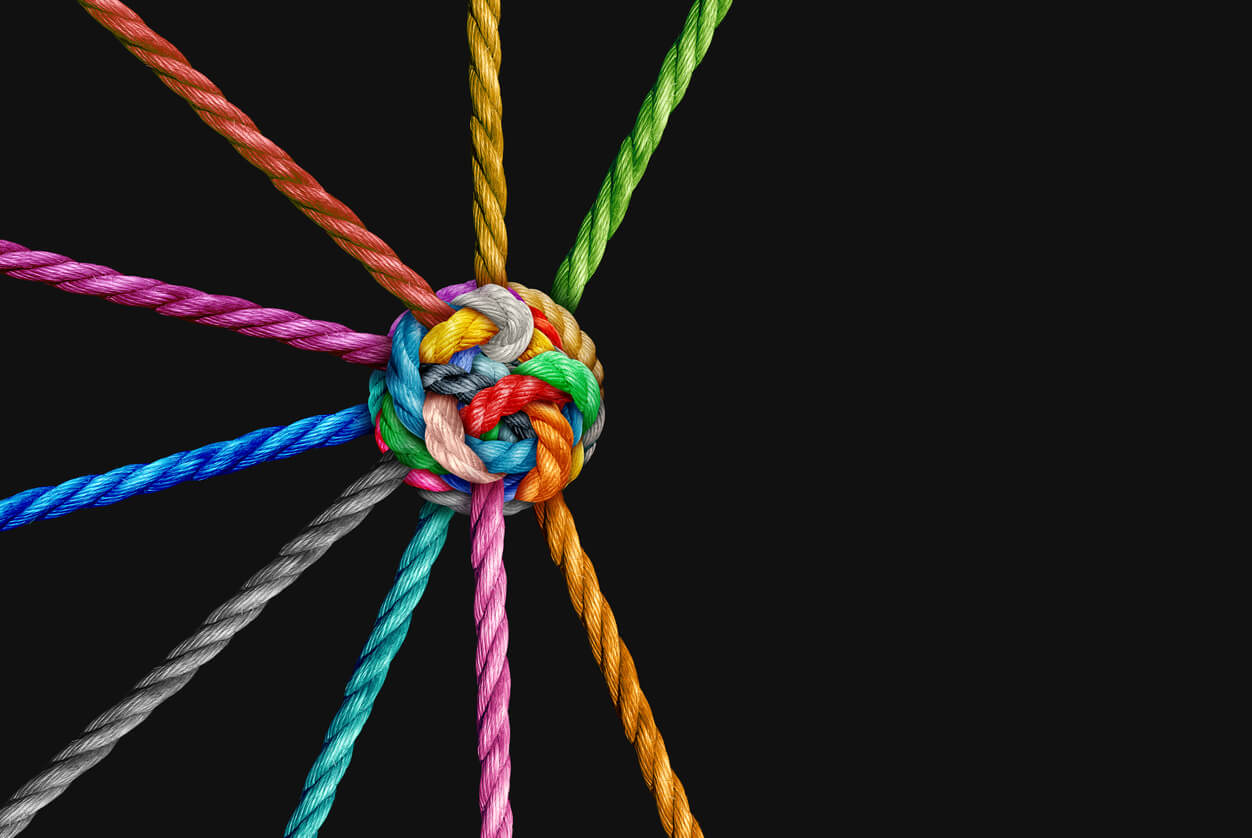By David Liddle
If you’ve ever thought that there must be a more positive, less damaging way of resolving workplace disputes than that offered by the traditional approaches, the resolution framework could well be what you’ve been looking for.
There are very few people who haven’t experienced some form of conflict at work at some point in their career. Managers fall out with their direct reports over performance issues, team members come to blows as a result of differing working styles, colleagues clash with each other over whether work has been allocated fairly or whether some are being treated more favourably than others.
As recent headlines graphically illustrate, we are also seeing an increasing amount of alleged bullying, sexual harassment, misconduct, and discrimination of all kinds. The working world is clearly not a happy place for many people. It seems that our offices, shops, and factories are becoming increasingly confrontational, vitriolic, and toxic.
It’s a problem that is costing industry dearly, in both human and financial terms. Research from the CIPD suggests that nearly 4 in 10 UK employees experience some kind of interpersonal conflict at work over the course of a year. A report from the UK conciliation service ACAS puts the cost of this workplace conflict at £28.5 billion every year, equating to just over £1k on average for every employee.
The causes of workplace disputes are complex and varied. However, with over 20 years’ experience of mediating in some of the most complex disputes imaginable, I firmly believe that the way organisations typically handle conflicts, complaints, and concerns is contributing to this rising tide of dissent, disagreement, and dysfunctional behaviour. We need a fresh approach to resolving the myriad of issues that inevitably arise at work, one that is more appropriate for today’s fast-changing modern workplace.
A growing number of forward-thinking organisations – Burberry, HSBC, Aviva, and the BBC to name just a few – have recognised this and are reframing the damaging and divisive disciplinary, grievance, and whistleblowing policies and processes of the past. They are developing an overarching resolution framework which allows them to resolve conflicts and concerns in a more compassionate, people-centred, and values-driven way.
Says Claire Salter, Director of Global Employee Relations at Burberry: “We know that conflict is unavoidable, but we know that when it’s handled well, it can be a driver for positive change. In fact we strongly believe that positive and constructive conflict can fuel our creativity – and as a creative business, creativity is at the core of everything we do. That’s what excites us about implementing a resolution framework – it’s an opportunity for us to reframe the conversations that we’re having about conflict across the business, and it gives our leaders the tools and space they need to resolve those issues early, informally and constructively.”
So what does a resolution framework look like, and how does it work in practice?
From retributive to restorative
The traditional processes used by organisations to manage conflicts and concerns are adversarial in nature. They are based on a retributive model of justice that has blame and punishment as its primary outcomes. This model of justice is reductive, i.e. it encourages right / wrong, win / lose, and blame / shame mindsets and behaviours. It infantilises our workforces, meaning that, when a problem arises, instead of encouraging employees to sit down and sort it out through face-to-face, adult dialogue, people are typically plunged straight into damaging and divisive formal and often deeply damaging and unsafe processes.
This causes a huge amount of stress and distress to the people involved. Employees become increasingly anxious and upset as the sense of psychological safety diminishes. As their stress levels rise, their performance starts to suffer, with little option but to take time away from work or, ultimately, leave the organisation. It’s not just the people directly embroiled in the conflict who are affected. Everyone around them is impacted, too. Colleagues take sides, a tense atmosphere takes hold, and productivity declines, so much HR and management time is wasted.
These formal processes rarely, if ever, result in a successful outcome. Relationships are irretrievably damaged, good people leave their jobs, corporate reputation takes a hit and, ultimately, no one wins.
A resolution framework, by contrast, is restorative in nature. As an integrated people policy (IPP), it offers organisations a variety of proactive and empowering approaches for securing a constructive and lasting resolution to all types of workplace conflict. These might include early, informal dialogue, facilitated conversations, mediation, team facilitation, and coaching. The ability to access more formal processes, up to and including dismissal or legal action, is retained for the rare occasions where it is identified that this is the most appropriate course of action.
These frameworks put people before process. They shift the dial towards adult-to-adult dialogue, allowing organisations to develop positive workplace cultures that have empathy, inclusion, and well-being at their heart. They engender a culture of cooperation and collaboration, leading to happy, healthy, and harmonious workplaces.
As Heather Palmer, Senior HR Business Partner in Culture, Policy and Employee Relations at the BBC, explained in a recent webinar, there is also a strong business case for adopting this more progressive, restorative approach: “We’ve used diagnostics to identify that moving to a resolution framework is not just about improving the people-centred experience in dealing with conflict resolution, but there’s a business and economic benefit in terms of the money and time that we’re spending in formal processes.”
Getting up and running
The involvement and collaboration of key organisational stakeholders – senior leaders, managers, HR, employees, and union partners – is key to successful development and implementation of a resolution framework. Companies who have successfully introduced this new approach have typically involved all interested parties from the outset in developing overarching frameworks that work in their specific operational circumstances and align to their organisational purpose and values.
Three core elements of the resolution framework are the resolution centre, the resolution index, and resolution champions.
The resolution centre is a central hub which coordinates the day-to-day operation of the framework and manages the triage process (see below) used to identify the most appropriate route to resolution for any conflicts, complaints, and concerns that are raised. The centre also typically coordinates conflict management training for front-line managers and resolution champions (see below) and, in some cases, manages in-house communication and development of tool kits and resources to support employees as they embrace the new approach. The resolution centre also has an important role to play in gathering data, feedback, and intelligence around the resolution process, so that the organisation can continually learn and improve its conflict-management competence.
The resolution index is used to triage any requests for resolution that come through to the central hub. Some of the criteria used in the triage process include the seriousness of the issue being raised, the impact of the situation on the parties, previous attempts to resolve the situation and their outcomes, the number or frequency of previous complaints, and the risk of the situation to the parties and the organisation. Each request is scored against the criteria, and the most appropriate route to resolution is assessed. The lower the score, the more informal the remedy (such as local resolution, a facilitated conversation, coaching, or mediation). In higher-scoring incidences, organisations may consider undertaking a detailed fact-find, which may in turn lead to a more formal resolution meeting.
Resolution champions are an internal cadre of trained volunteers who support the parties through the resolution process and for at least a year after, to ensure that no further issues arise and that the agreed outcomes or improved relationships are retained.
How it works in practice
The resolution framework encompasses the following key steps:
Step 1: An issue arises
The resolution framework starts with the premise that it is the responsibility of the local line manager to resolve any situations as early and constructively as possible. This usually takes the form of an early, informal resolution meeting, where the people concerned are able to discuss their disagreements or concerns openly and honestly, in a safe and supportive space. In the vast majority of cases, this approach generates a successful resolution and no further action is needed. Should problems start to arise again, a resolution champion will be on hand to help nip any issues in the bud and get everyone back on track. The success of an early-resolution meeting does, of course, depend greatly on the line manager’s having an understanding of the nature of conflict and how to resolve it. Organisations cannot assume that their managers will naturally have the confidence and competence to do this; they will need training to support them in this important role.
Step 2: Request for resolution
If attempts to resolve an issue locally and at source are not successful, the next step is for the parties involved to submit a “request for resolution” to the resolution centre. Trained staff within the centre will triage the request against the predetermined criteria in the resolution index, and will make a recommendation for the most appropriate route to resolution. This step is the restorative alternative to the more retributive approach of “raising a grievance”.
Step 3: Early resolution
Requests that are triaged at this early stage are most likely to be well suited for one of a number of early-resolution methods. This might include a facilitated conversation, where both parties are able to share their concerns, express their needs, and find a mutually acceptable way of restoring the relationship and moving forward. Some cases will be suited to mediation, where a trained, independent mediator will bring people together to engage in powerful dialogue that will help to transform their dispute from dysfunctional and destructive to constructive and functional. Other options might include team facilitation or coaching. Each approach is suited to a particular type of conflict and its relative complexity or severity.
Step 4: Formal resolution
For higher-scoring cases, the triage process will lead to a more formal resolution process. This might be a fact-find (an alternative, more restorative approach to the traditional investigation) or a resolution meeting (as opposed to a disciplinary or grievance hearing).
Organisations that have reframed their traditional approaches to managing conflict and adopted a resolution framework are benefiting in a number of ways. They are resolving issues sooner and more effectively and protecting workplace relationships, with a corresponding impact on performance, reputation, and competitive advantage.
Anthony Fitzpatrick, Head of Colleague Experience and Employment Policy at Aviva, sums it up well: “The introduction of the resolution framework changed the whole concept and dynamic of managing conflicts and complaints within the workplace. Culturally, the change in language and emphasis have been so important. We aren’t focusing on being aggrieved, we are focusing on resolution, and that is a fundamental difference. We have seen that the vast majority of cases are settled either at triage or through a facilitated conversation. This allows everyone to focus on their job and increases morale and motivation, which is good for personal well-being; it’s good for the business and it’s good for the customer, too.”
About the Author
 David Liddle is the founder and chief consultant at The TCM Group and author of the book Managing Conflict: A practical guide to resolution in the workplace, Kogan Page, 2nd edition, 2023.
David Liddle is the founder and chief consultant at The TCM Group and author of the book Managing Conflict: A practical guide to resolution in the workplace, Kogan Page, 2nd edition, 2023.




































